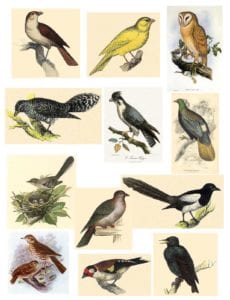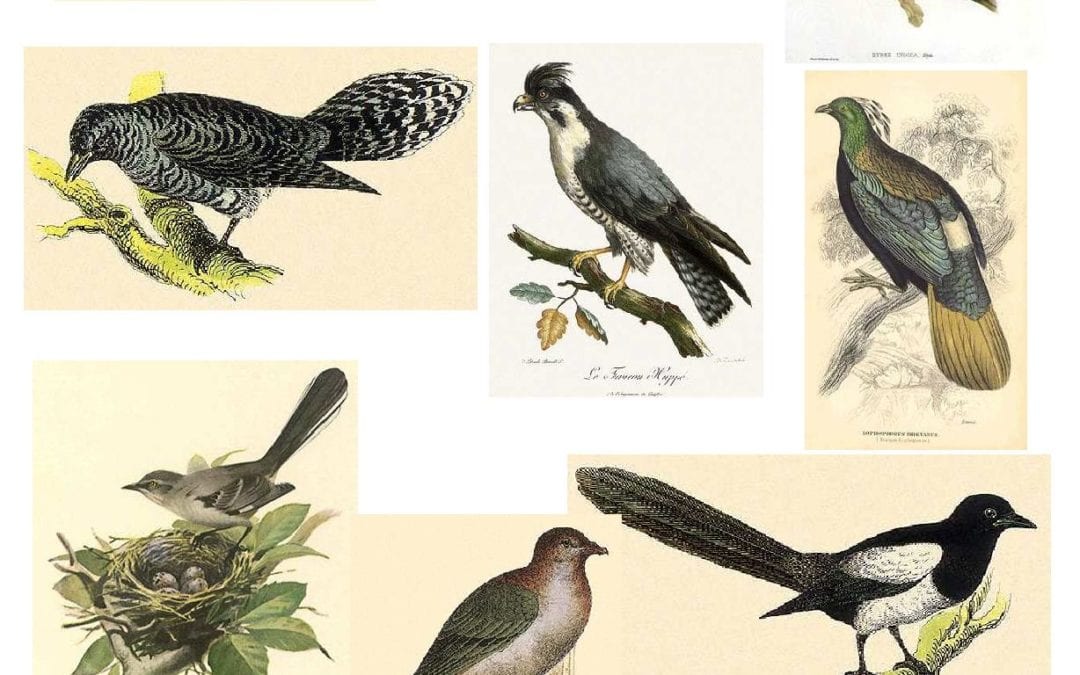These were the words of Victor Newton as he wrote for the Aberdeen Press and Journal in 1943, describing ‘how pigeons play their part in war.’ And so, in this special blog, we will discover how pigeons were used in both the First World War and Second World War, unearthing stories of their great bravery through the pages of our newspapers.
As Leslie Saxthorpe wrote prior to the outbreak of the Second World War in the Nottingham Journal, ‘it is impossible to quote all the self-sacrificing deeds that stand to the ever-lasting honour of the birds,’ but this blog will go some way to celebrating the homing and carrier pigeons who helped to save lives, whilst putting themselves in extreme danger.
An Old Fashioned Post in Modern War
The outbreak of the First World War saw the tragic collision of antiquated military tactics with the latest advances in technology. As such, it also saw the introduction of modern methods of communication; however, these did not prove to be reliable, as one American correspondent noted in 1916, whilst stationed behind the German lines:
It is impossible to depend on telephonic communications…so often are the wires cut and so dangerous is it to repair them. This has led to the revival of carrier-pigeon communication, not for long distances, but as the only dependable medium of communication from the front to the rear.
Indeed, the British, French and German armies were all using carrier pigeons as a method of communication, as did the American army when they joined the conflict. Pigeons were employed to carry messages between the lines, and in 1915 the Illustrated London News pictures ‘The Pigeon-Express.’ Housed in a converted motor-bus, these pigeons were the ‘winged messengers’ of the French army.
Pigeons were also used by airmen, the Illustrated London News explaining how ‘every seaplane carries two birds, to send duplicate emergency messages…they replace wireless in small vessels, and some sea planes.’
And so it is no surprise that in 1918 the Boston Guardian carried this stern message:
Farmers who are in the habit of shooting pigeons should be careful to confine their attention only to wood-pigeons. They should remember that HM Government to-day employ large numbers of homing pigeons, which are to be met with all over the country. The destruction of these trained birds by thoughtless gunners may entrail serious consequences….Their work is a matter of life and death to our fighting men, and many a man alive to-day owes his life to the speed of the homing pigeon.
Heavy penalties were set to be issued to those who harmed any homing pigeons – for they were the heroes of the sky, and necessitated protection from those ‘thoughtless persons’ intent on a bit of sport.
Moreover, newspapers from the First World War abounded with stories relating to the pigeons who had been instrumental in saving lives – and here are just a selection of them.
Skipper Crisp – A Forlorn Hope
The Illustrated London News in March 1918 pictures the ‘forlorn-hope messenger’ that mortally wounded Skipper T Crisp RNR sent off, in a desperate attempt to seek assistance. His vessel, the ‘‘Nelson’ had been attacked by a U-boat. Dying, Crisp managed to affix a ‘hastily scribbled message’ to a pigeon, which read: ‘Nelson’ being attacked by submarine – Skipper killed – send assistance at once.’
The rest of the crew was saved, as relates the Boston Guardian, ‘but only through the timely arrival of their pigeon messenger.’ As for the heroic Crisp, he was posthumously awarded the Victoria Cross by King George V.
Cher Ami – A Wartime Celebrity
Perhaps the most famous pigeon to emerge from the First World War was Cher Ami. In an article some twenty years later penned by Leslie Saxthorpe for the Nottingham Journal, Saxthorpe relates how English-born Cher Ami ‘by its marvelous courage saved an American battalion from being wiped out.’
The so-called ‘Lost Battalion,’ commanded by Major Charles Whittlesey, was ‘being subjected to fierce artillery fire; and the field telegraph had been cut.’ The only recourse was messenger pigeon. Saxthorpe relates how six pigeons were sent by the Major on this perilous rescue message, ‘one by one, only to see them fall.’
The seventh was Cher Ami, who ‘got away, although hit.’ Shrapnel had broken his breastbone, whilst his right leg had been shot away. But despite these devastating injuries, Cher Ami was able to fly the 25 miles needed to fetch help, and the battalion was saved. Thankfully, he recovered from his wounds and was taken to the United States, where he received a welcome ‘as if he had been General Lafayette come to life again.’
When Cher Ami eventually passed away, ‘full of years and honour,’ his body was placed in Washington’s Smithsonian Institute.
The Mine-Sweepers’ Hope
Less exalted than its feted American cousin, but still as brave, was a bird known as the ‘Mine Sweepers’ Hope.’ The Nottingham Journal tells of how this particular pigeon braved the ‘North Sea under all conditions,’ arriving ‘time after time from over the waters, landing at a spot in Essex, sometimes half-frozen, carrying messages.’ One of these message was news of a Zeppelin attack on mine-sweepers, the first of its kind, and ‘the news enabled planes to be sent and the airships were driven off.’
Another pigeon was responsible for saving lives at sea, after a ‘flying boat and hyrdoplane got into difficulties in stormy weather.’ With all lives on board threatened, the Boston Guardian tells of how a pigeon was released with a message requesting help. ‘In the teeth of a fierce wind the gallant bird fought its way home, only to die from exhaustion on its arrival.’ But the message was safely delivered; ‘assistance was sent with all speed, and the lives of both crews were saved.’
Meanwhile, former cricketer Harold Gilligan got into difficulties whilst flying over the German Fleet, his aircraft having been struck by a piece of shrapnel. The aircraft made a crash landing in the sea, and four pigeons were sent to cover the enormous distance home – some 400 miles. The Nottigham Journal reports how ‘only one of the birds got through,’ the distance being so great, and the weather condition being so awful. Finally, the exhausted pigeon landed on the coast of Norfolk, and was found by the coastguard. The airmen were eventually rescued after three days.
With over 100,000 birds attached to both the Allied and the German forces, these stories represent a fraction of the bravery shown by the feathered battalions during the First World War. And with the advent of the Second World War, would their services again be required?
More Homing Pigeons Than Ever
The answer to this was a clear yes; pigeons were in more demand than ever. The Aberdeen Press and Journal in 1943 relates how ‘despite modern scientific instruments the homing pigeon still finds employment. There are now more homing pigeons than there ever were.’
Used by the RAF on their ‘bombing raids,’ pigeons accompanied an aircraft in case it was shot down, bringing ‘word of the exact location of the crew.’ Meanwhile, in North Africa, pigeons were being used with great effect in desert warfare.
The Illustrated London News reports how the Royal Corps of Signals ‘is using carrier-pigeons in the Western Desert as a valuable alternative method of communication when telephone wires are cut and it is impossible to use wireless,’ just like the armies of the First World War. Touchingly, the pigeon handlers were picked from men ‘who were pigeon fanciers in civil life.’
The Illustrated London News reports on the success of the endeavor, and pictures two particular pigeons, Crusader and The Blue, ‘who carried the first battle pictures in the Western desert.’
The Dickin Medal – ‘We Also Serve’
The Dickin Medal was established by PDSA founder Maria Dickin in 1943 to honour the work of animals in the Second World War, and it is little wonder that pigeons have received the most Dickin Awards, totaling 32 between 1943 and 1949 – dogs having received 18.
Here we celebrate a handful of these feathered winners from the Second World War.
Take Winkie, who received the Dickin Medal for saving an air crew. According to the Illustrated London News, after her plane crashed, she ‘fell into the oil-covered sea.’ Freeing herself, she flew the 120 miles back to base, and ‘the search for the crew was then successfully redirected.’
There was also a royal winner of the award, King George VI’s own racing pigeon Royal Blue. As reported in the Liverpool Echo in 1945, Royal Blue had been ‘sent on war service in 1940,’ and had since displayed ‘outstanding achievement.’
Commando, and seven other pigeons, were on display at the ‘To Victory with the RAF‘ exhibition in London. Commando was particularly notable, for he ‘made ninety operational trips over enemy territory,’ and had been presented with the Dickin Medal for his valiant efforts.

Meanwhile in June 1945, the Newcastle Evening Chronicle reports on the exploits of two more brave pigeons, who also received the Dickin Medal. William of Orange was honoured for his role in the ‘airborne operations at Arnhem,’ whilst his contemporary Ruhr Express was dropped ‘by parachute within enemy lines 300 miles from base and brought back valuable information in record time.’
Tommy, a carrier-pigeon, had a slightly circuitous route to his award. Injured, he had strayed to the Netherlands in 1942, where Mr D Dryver nursed him back to health. When Tommy had recovered, Mr Dryver sent him ‘back to England with valuable information.’ The Illustrated London News reports how Tommy received the Dickin Medal for his services, whilst his Dutch saviour was given ‘two RAF pigeons in token of his good services, and his courage and presence of mind.’
Rounding of our roster of brave pigeons are the two ‘D-Day Pigeons.’ The Daily Mirror in January 1947 reports how they were awarded the Dickin Medal ‘for flying from France with early news of the invasion.’ One of the brave pigeons died soon afterwards, ‘on another operational flight.’
There are of course many other pigeons who made the ultimate sacrifice; these mentioned here represent a fraction of those who displayed bravery in testing conditions.
Pigeon Patrol Products & Services is the leading manufacturer and distributor or bird deterrent (control) products in Canada. Pigeon Patrol products have solved pest bird problems in industrial, commercial, and residential settings since 2000, by using safe and humane bird
deterrents with only bird and animal friendly solutions. At Pigeon Patrol, we manufacture and offer a variety of bird deterrents, ranging from Ultra-flex Bird Spikes with UV protection, Bird Netting, 4-S Bird Gel and the best Ultrasonic and audible sound devices on the market today.
Voted Best Canadian wholesaler for Bird Deterrent products ten years in a row.
Contact us at 1 877-4-NO-BIRD,(604) 585-9279 or visit our website at www.pigeonpatrol.ca
Pigeon/Pigeon Patrol / Pigeons Roosing / Vancouver Pigeon Control / Bird Spikes / Bird Control / Bird Deterrent / PIgeon Deterrent / Surrey Pigeon Control / Pest / Seagull deterrent / Vancouver Pigeon Blog / Birds Inside Home / Pigeons in the cities / Ice Pigeons / What to do about pigeons / sparrows, Damage by Sparrows, How to Keep Raccoons Away, Why Are Raccoons Considered Pests / De-fence / Pigeon Nesting / Bird Droppings / Pigeon Dropping / woodpecker control / Professional Bird Control Company / Keep The Birds Away / Birds/rats/seagull/pigeon/woodpecker/dove/sparrow/pidgeon control/pidgeon problem/pidgeon control/flying rats/pigeon problems/ bird netting/bird gel/bird spray/bird nails/bird guard

